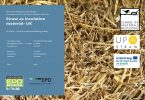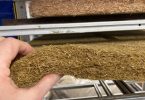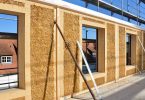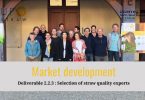Straw bale construction offers a sustainable, bio-based insulation material for construction derived from a co-product of cereal food crop production. Even though straw has been used in construction for millennia, the use of straw bales dates from only the late nineteenth century. While the use of straw is still largely niche, it has grown significantly around the world in recent years, supported by new research, construction innovations and building codes of practice.
This chapter presents a state-of-the-art review in the current understanding of straw bale materials and construction technologies. Techniques including load-bearing, non-load-bearing and prefabricated panelized construction systems are covered. The structural and hygrothermal properties of straw, together with the fire resistance, structural properties, durability and acoustic performance of wall assemblies are also presented. This second edition includes updates from the latest research and development work on straw bale construction.
Authors:
- Walker, Pete
- Thomson, A.
- Maskell, D.
Link to PDF (institutional access)
alternative LINK to DOWNLOAD







